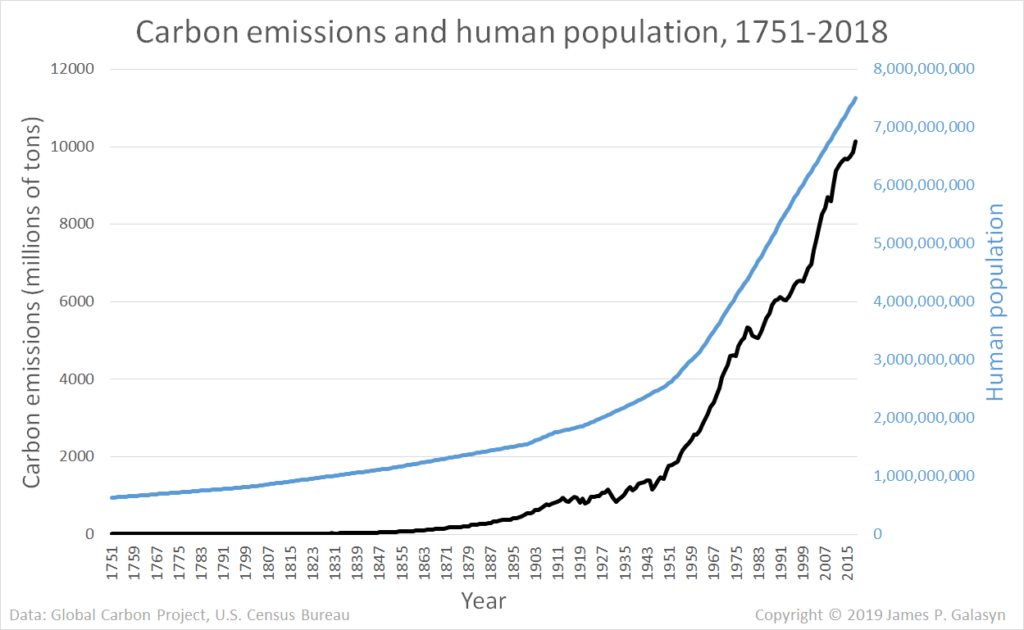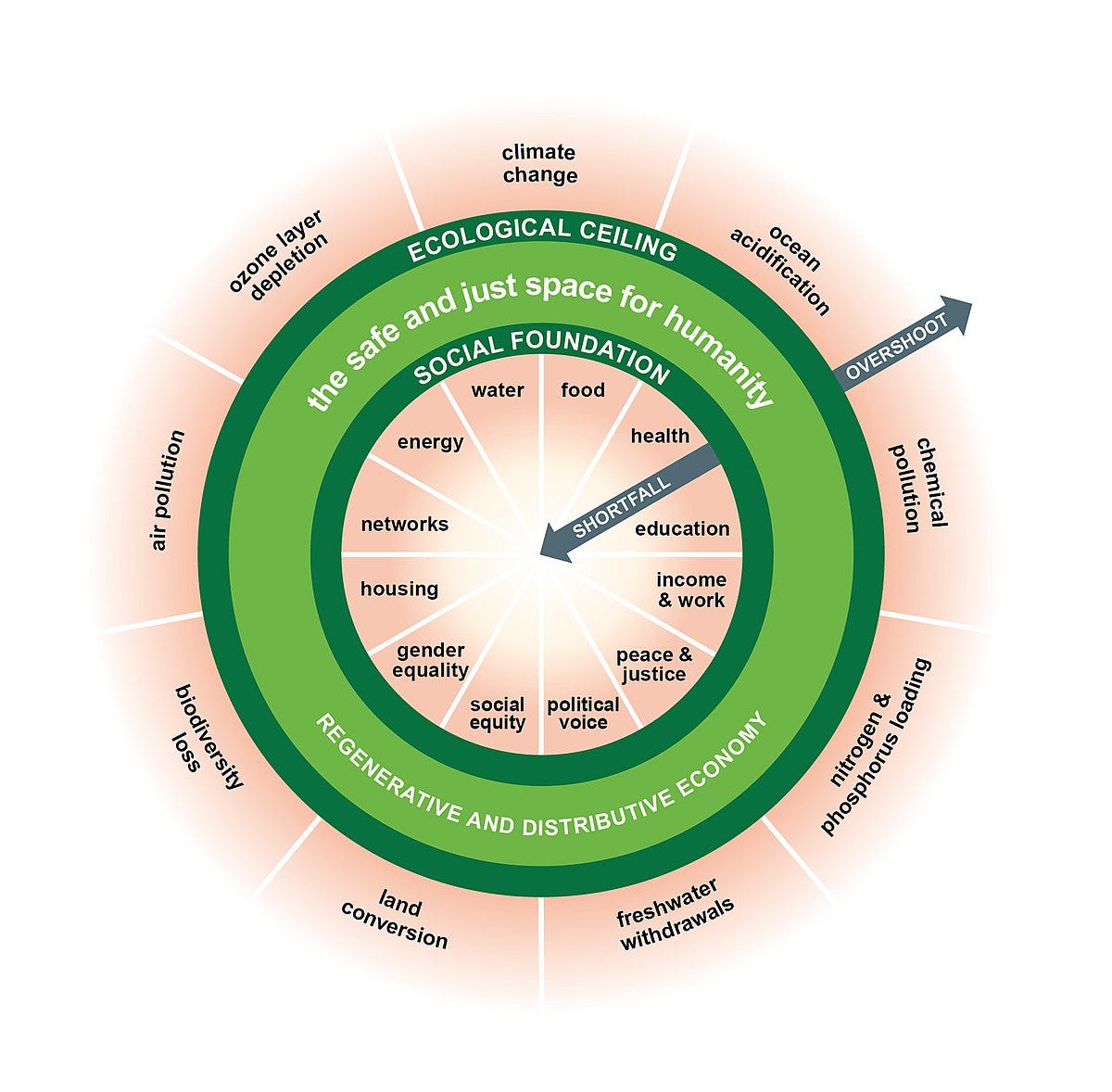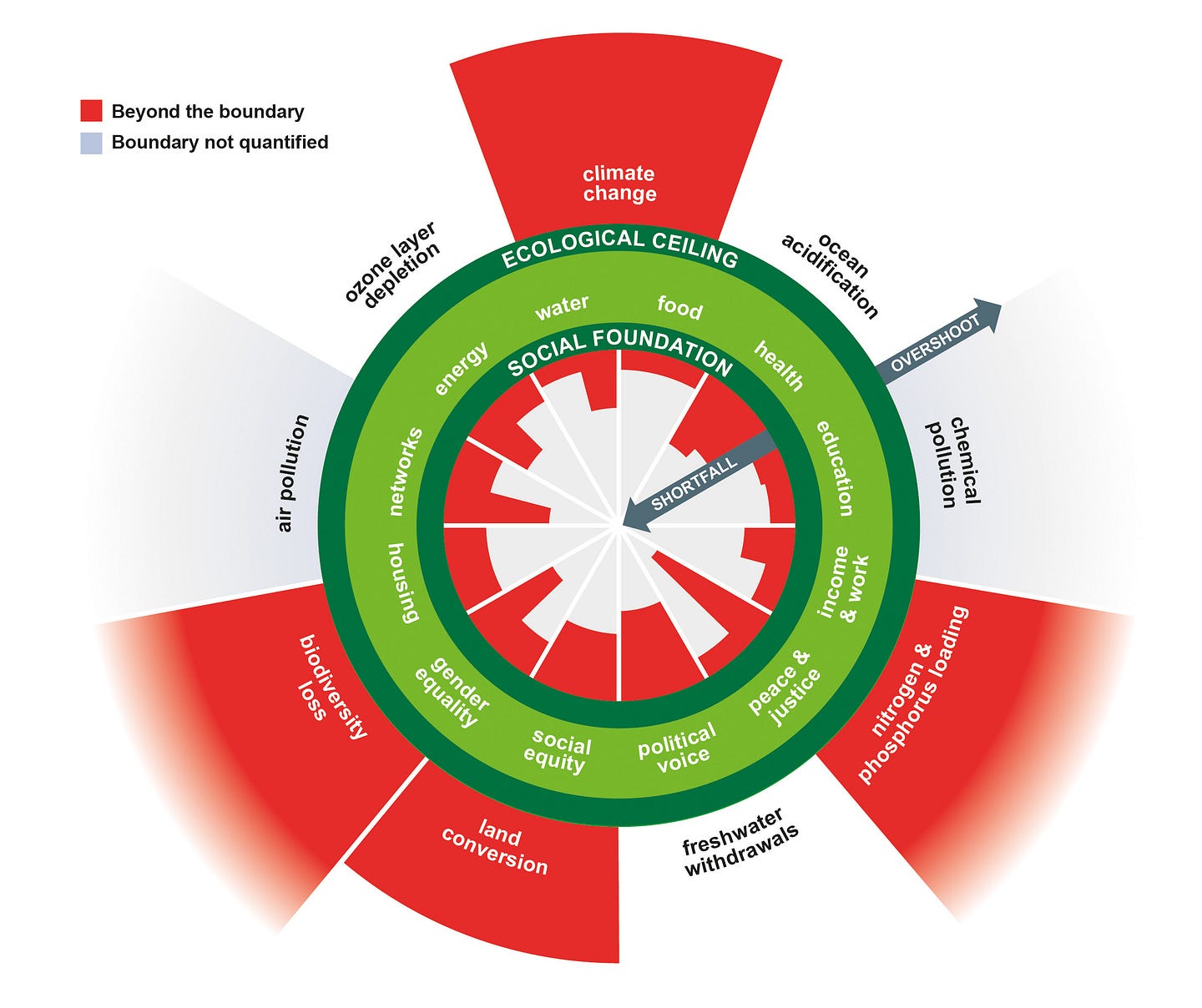IoT and the Potential to Save the World
IoT and the Potential to Save the World
- Last Updated: December 2, 2024
Ethan Wei
- Last Updated: December 2, 2024



When we think of progress, we almost always think of growth. After all, the conventional idea of progress is about positive or negative trends. And, as a society, we’ve grown exponentially in almost every category imaginable. Still, the question arises: Is this growth sustainable?
Take a look at the graph below. While the growth in resources has allowed for population growth, it has also led to a considerable rise in fossil fuel emissions.

Doughnuts : Not Just a Comfort Food
We’ve taken off from a metaphorical plane, intending to fly higher and higher. Yet, at some point, we’ll run out of fuel and have to land. This isn’t a harsh realization; it’s a fact of life. Instead of aiming for growth, we must shift our mindset to strive for good but sustainable.
Using IoT, we can more effectively use our world resources. Some areas where this is already being done include smart farming, energy efficiency, and biodiversity preservation.
So how will we do this? Enter: doughnut economics. Developed by Kate Raworth, it’s a guide for humanity to advance society in an ecologically friendly way.

Although the model includes environmental, social, and industrial factors, I’ll focus primarily on the environmental aspect. The doughnut model is somewhat intuitive:
- The green ring represents the “perfect” society — one that is prosperous but renewable.
- Inside the ring, some necessities allow humanity’s development. Unfulfilled, they prevent us from using earth to it’s fullest potential.
- On the outside, we venture into the earth’s biological capacity. If we stay there, we’ll deplete our resources and eventually go extinct.
Where do we stand? This is humanity’s current scoreboard:

As you can see, there’s a lot of red in the diagram. We’re nowhere near perfect. Every social foundation isn’t completely fulfilled. We’ve made progress in all categories, but there are still pockets of the world that lack these necessities.
Furthermore, we’re already overshooting in some categories. Without correction, the earth won’t be habitable for much longer. Humans have diminished the earth’s resources. But, we can still correct our errors.
Sensors : Keeping Levels in Check
Now that we know our points of improvement, how do we actually improve? Without quantifiable evidence, it’s hard to make any lasting changes.
Introducing: sensors. Though they’ve been around for a while, recent advancements have made them much more powerful. Not only do they give us insightful information about the environment, but they can also initiate solutions.
How Sensors Work
Sensors themselves aren’t very useful. They can send a signal when something happens or when something exceeds a threshold, but that’s about it. Once they’re connected with other technologies, however, they become much more interesting. They can incite a process, detect a change, and stop an activity.
This is the Internet of Things or IoT. IoT is a network of physical objects combined with software to connect the world. Any physical object connected to the internet is part of the Internet of Things. Examples include smart appliances, self-driving cars, and in this case — sensors. It works like this:

In simple terms: sensors gather data, have that data processed by an algorithm, then have another algorithm do something with it.
Here’s an example. Imagine if you wanted to know when your bathtub is full. You would place a sensor to detect the water level in the tub. Once it senses the water going past a certain level, it sends a notification to your phone. Then, you know to shut off the faucet.
These are the steps in this example:
- Sensors: We have a sensor detecting whether the water level has risen past a certain point.
- Connectivity: The sensor connects to Wi-Fi to alert your phone when it detects the water past the desired level.
- Data Processing: When the water rises past a point, it triggers an algorithm that sends a notification to your phone.
- User Interface: Your phone gets a notification that the bathtub has filled to your desired height.
Problems with IoT
IoT is not the answer to every problem. While sensors might become the cornerstone of environmental technology in the future, its current form is still inconvenient. If these devices are so powerful and convenient, why aren’t they common?
The truth is, IoT is still new. Although sensors have been around for years, it’s still hard to use them in everyday life. These are the most common problems:
- Connectivity: Our world is the most connected it’s ever been. 57 percent of the entire world’s population has an internet connection. Still, the connection isn’t powerful enough. Sensors are inconvenient because they are at risk of disconnecting due to Wi-Fi fluctuations.
- Privacy: With any innovation that takes in data, privacy becomes an issue. It’s hard to know how much data is being taken from you and whether you have the rights to it. Many people are hesitant to adopt IoT into their daily lives for fear of a “big brother” watching over them.
- Security: If everything is connected to the internet, it raises the risk of hacking. For example, someone can hack into an electronic lock remotely, but not a mechanical lock. Additionally, most companies haven’t made security a priority in IoTs, so it’s still vulnerable.
The Future
Heralded as the next innovation by some and an unnecessary gimmick by others, the future of the IoT space is uncertain. One of the more ambitious concepts is the idea of smart cities. Using IoT, cities can build a connected infrastructure that makes life much more convenient.
For IoT to be applicable in society, glaring problems must be fixed. However, there have already been advancements to overcome these obstacles:
- Connectivity: The biggest advancement in this area is 5G connectivity. It’s the next generation of mobile networks, said to be common within the next 5 years. With faster connectivity speeds, IoTs will become much more reliable.
- Privacy: Increasing legislation on the collection and use of data has somewhat assuaged worries of privacy. Most notably, companies are starting to use Privacy by Design features that eliminate consumer’s worries of data being collected without their knowledge.
- Security: IoT devices lack security because companies haven’t built the security infrastructure. Currently, these devices connect to networks that are easy to hack into. With more emphasis on cybersecurity, these devices will be less prone to data leaks and hacks.
With a few improvements, it’s clear that it’ll be a cornerstone of 21st-century technology.
Tying It All together
With knowledge of both sensors and the doughnut model, we can devise a future plan that allows society to thrive. The reason we’re currently overshooting Earth’s resources is that we don’t know how to be efficient. 20% of the Earth’s natural resources currently goes to waste.
Imagine if we cut that number down to even 10%. We could prolong the lifespan of humanity for centuries, if not millennia. Using IoT, we can more effectively use our world resources. Some ways we’re already doing this include:
- Smart Farming: In California, IoT is being used with irrigation to measure water levels and more efficiently grow crops in drought-ridden areas. Using sensors to detect areas of low moisture or high moisture, the sparse water supply can be used better.
- Energy Efficiency: According to Boston Consulting Group, IoT could reduce global climate change by 16.5% by 2020 compared to current efforts. Specifically, quantifying excessive use of electricity, fossil fuels, etc. will limit the number of resources wasted.
- Biodiversity Preservation: The Iberian Lynx was re-established in Spain using IoT. Using collars for mapping their location and habits, scientists were able to find a reliable, non-intrusive way to reestablish their population.
Although detection isn’t directly solving any problems, it opens the door to find patterns and trends that can be solved with other technologies. IoTs’ real potential lies in the compatibility with AI and quantum computing to draw insight from the things it detects. Using that data, IoT can enable a hassle-free future that saves resources and money for humanity.
The Most Comprehensive IoT Newsletter for Enterprises
Showcasing the highest-quality content, resources, news, and insights from the world of the Internet of Things. Subscribe to remain informed and up-to-date.
New Podcast Episode

Moving Past the Pilot Phase in IoT and AI
Related Articles





